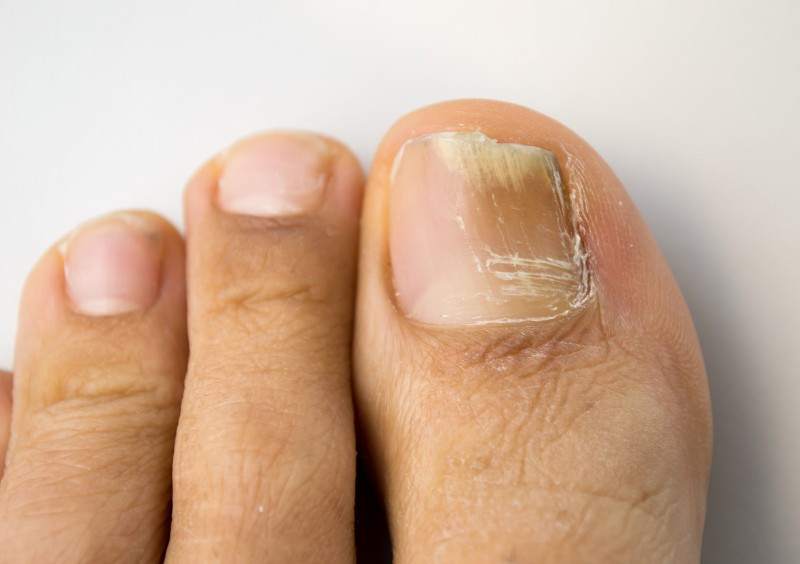Anyone who gets pedicures and manicures and treats nail painting or polish as an art as much as a science know the importance of taking care of their nails. Male and female alike, most of us want those shiny growths to look good and properly trimmed, not just for the self-pleasing aesthetics but to be respected by others who notice these kinds of things.
But there's more to nail care than just paint, polish, and trimmers. There's also the health of our nails - we're still talking both toes and fingers here - at stake. Like most other parts and organs of our body, that can sometimes mean dealing with infections. Yes, nail inflections, the kind where fungus is ordinarily present.
Types of Nail Fungal Infections
Fungal infections with fingernails and toenails - most such infections occur in the latter - are the most common type of disease that affect our nails, usually appearing as discoloration, thickening of the nail, and crumbling edges. The most common types of such infections are onychomycosis and tinea unguium.
Nail infections affect millions of people. It is rare - perhaps hardly ever - that a nail fungal infection has led or will lead to death, but such infections can be painful and unsightly, with nails turning white, yellow, brown, or even black and often accompanied by foul odors, brittleness, and cases in which the nail (or nails) separates from the nail bed before falling off. Note: it takes about 18 months for a toenail to grow back. Not fun.
Causes of Nail Fungal Infections
Like any other body part, your fingernails and toenails beg proper and consistent proper hygiene. This might include keeping both sets of nails short, dry, and clean; use of antifungal sprays or powders; wearing in public places shoes or sandals that cover your nails; not sharing shoes or socks; and not picking or biting your nails. Neglect in any or all those areas can leave your nails susceptible to infection.
Nail fungus can affect your nails if exposed to such organisms as mold, yeast, or other types of fungi. Walking barefoot through locker rooms or public bathrooms, such as those with showers like at campsites can put your toenails, especially, at risk of developing a fungus. Ditto for frequent exposure to warm, moist - think humid environments -- whether it be a swimming pool or the type of climate in which you live.
Keep in mind that fungal spores are often airborne and can grow into a fungus if they land on one or more of your nails. Those spores feed off your nail tissues and even tunnel into the skin that is beneath the nail, eventually resulting in the thickening of the nail(s), which may then be lifted off the nail bed due to the accumulation of fungal debris.
If you're walking in the rain or hiking through a setting such as a damp forest and your shoes and socks soak through, be sure to remove that wet attire as soon as possible, then thoroughly clean and dry your feet - and hands as necessary - and put on dry socks and shoes. Don't procrastinate.
Home Remedies for Preventing or Treating Nail Infections
There are various treatments and prescription medications for nail fungus infections, but they can involve a very long process that offers no guarantees. Granted, there are no guarantees in any aspect of such care, but there are natural remedies to include supplements worthy of your consideration. Here are several recommendations, each worth a discussion with your health care provider before you try any of them.
Eucalyptus oil. This is one among several essential oils that have natural antifungal and antibacterial properties, which you might say are just what the 'doctor ordered' for warding off nail fungal infections. Such essential oils should be first diluted with a carrier oil such as coconut olim before skin application.
Oregano oil. It contains a substance known as thymol that also has antifungal properties.
Olive leaf extract. This is an herb that contains a natural antifungal and antimicrobial compound known as oleuropein from which a salve can be made and applied to the nail(s). Or you can take oral capsules containing the same extract to help boost your immune system, which can also help you ward off such infections.
Garlic. Garlic comes from a plant that has powerful antimicrobial properties. Garlic cloves can be applied topically to nails, but it is also feasible to use garlic supplements that are taken orally to help mitigate infections.
Healing your fingernails or toenails from fungus infections isn't an easy or quick process, and can take months or even years to eliminate the fungus, although the affected nail(s) could still be permanently damaged. Typically, the most practical thing to do is treat the fungal toenail as a condition that needs to be managed instead of cured.

